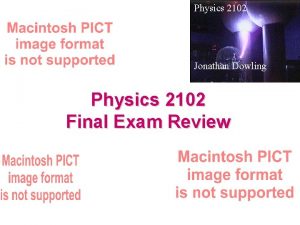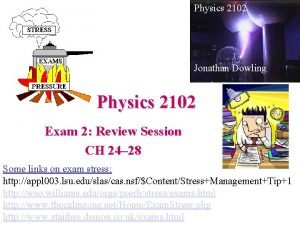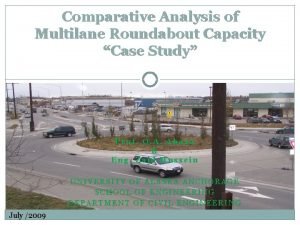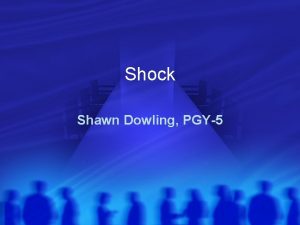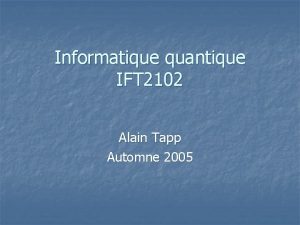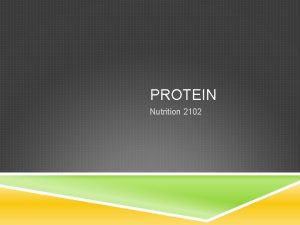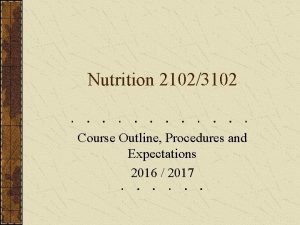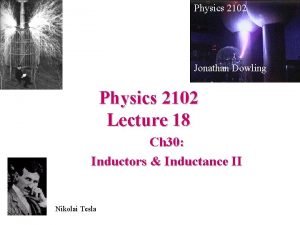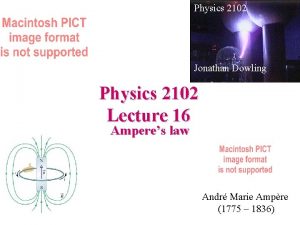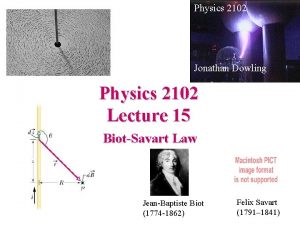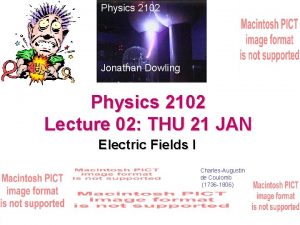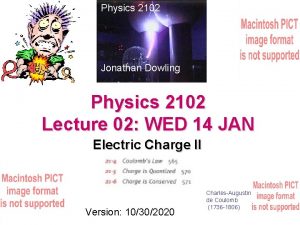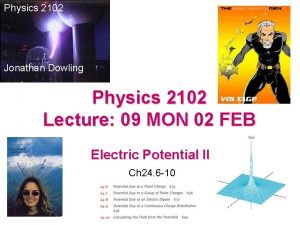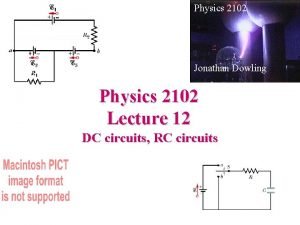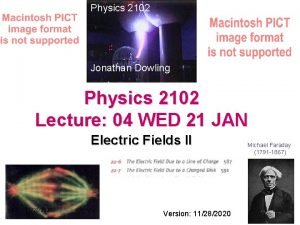Physics 2102 Jonathan Dowling Physics 2102 Lecture 7















- Slides: 15

Physics 2102 Jonathan Dowling Physics 2102 Lecture 7 Capacitors I

Capacitors and Capacitance Capacitor: any two conductors, one with charge +Q, other with charge –Q –Q Potential DIFFERENCE between +Q Uses: storing and releasing conductors = V electric charge/energy. Q = CV where C = capacitance Most electronic capacitors: micro-Farads (m. F), Units of capacitance: pico-Farads (p. F) — 10– 12 F New technology: Farad (F) = Coulomb/Volt compact 1 F capacitors

Capacitance • Capacitance depends only on GEOMETRICAL factors and on the MATERIAL that separates the two +Q conductors –Q • e. g. Area of conductors, separation, whether the space in between is filled (We first focus on capacitors with air, plastic, etc. where gap is filled by AIR!)

Electrolytic (1940 -70) Electrolytic (new) Paper (1940 -70) Capacitors Variable air, mica Tantalum (1980 on) Ceramic (1930 on) Mica (1930 -50

Parallel Plate Capacitor We want capacitance: C=Q/V E field between the plates: (Gauss’ Law) Relate E to potential difference V: What is the capacitance C ? +Q Area of each plate = A Separation = d charge/area = s = Q/A -Q

Capacitance and Your i. Pod!

Parallel Plate Capacitor — Example • A huge parallel plate capacitor consists of two square metal plates of side 50 cm, separated by an air gap of 1 mm • What is the capacitance? C = e 0 A/d = (8. 85 x 10– 12 F/m)(0. 25 m 2)/(0. 001 m) = 2. 21 x 10– 9 F (Very Small!!) Lesson: difficult to get large values of capacitance without special tricks!

Isolated Parallel Plate Capacitor • A parallel plate capacitor of capacitance C is charged using a battery. • Charge = Q, potential difference = V. • Battery is then disconnected. • If the plate separation is INCREASED, does Potential Difference V: (a) Increase? (b) Remain the same? (c) Decrease? • Q is fixed! • C decreases (=e 0 A/d) • Q=CV; V increases. +Q –Q

Parallel Plate Capacitor & Battery • A parallel plate capacitor of capacitance C is charged using a battery. • Charge = Q, potential difference = V. • Plate separation is INCREASED while battery remains connected. Does the Electric Field Inside: (a) Increase? (b) Remain the Same? • V is fixed by battery! (c) Decrease? • C decreases (=e 0 A/d) • Q=CV; Q decreases • E = Q/ e 0 A decreases +Q –Q

Spherical Capacitor What is the electric field inside the capacitor? (Gauss’ Law) Relate E to potential difference between the plates: Radius of outer plate = b Radius of inner plate = a Concentric spherical shells: Charge +Q on inner shell, –Q on outer shell

Spherical Capacitor What is the capacitance? C = Q/V = Radius of outer plate = b Radius of inner plate = a Concentric spherical shells: Charge +Q on inner shell, –Q on outer shell Isolated sphere: let b >> a,

Cylindrical Capacitor What is the electric field in between the plates? Gauss’ Law! Relate E to potential difference between the plates: Radius of outer plate = b Radius of inner plate = a Length of capacitor = L +Q on inner rod, –Q on outer shell cylindrical Gaussian surface of radius r

Summary • Any two charged conductors form a capacitor. • Capacitance : C= Q/V • Simple Capacitors: Parallel plates: C = e 0 A/d Spherical: C = 4 p e 0 ab/(b-a) Cylindrical: C = 2 p e 0 L/ln(b/a)]

Capacitors in Parallel • A wire is an equipotential surface! • Capacitors in parallel have SAME potential difference but NOT ALWAYS same charge! • VAB = VCD = V • Qtotal = Q 1 + Q 2 • Ceq. V = C 1 V + C 2 V • Ceq = C 1 + C 2 • Equivalent parallel capacitance = sum of capacitances A C Q 1 C 1 Q 2 C 2 Qtotal B D Ceq

Capacitors in Series Q 1 • Q 1 = Q 2 = Q (WHY? ? ) • VAC = VAB + VBC Q 2 B A C 1 C 2 Q SERIES: • Q is same for all capacitors • Total potential difference = sum of V C Ceq
 Jonathan dowling
Jonathan dowling Jonathan dowling
Jonathan dowling Dowling roundabout
Dowling roundabout International human resource management dowling 6th edition
International human resource management dowling 6th edition Shock mnemonic
Shock mnemonic Dowling optical
Dowling optical 01:640:244 lecture notes - lecture 15: plat, idah, farad
01:640:244 lecture notes - lecture 15: plat, idah, farad Sos.texas.gov form 2102
Sos.texas.gov form 2102 Ift-2102
Ift-2102 Nutrition 2102
Nutrition 2102 Nutrition 2102
Nutrition 2102 Nutrition 2102
Nutrition 2102 Physics 101 lecture
Physics 101 lecture Physics 101 lecture notes pdf
Physics 101 lecture notes pdf Physics 101 lecture 1
Physics 101 lecture 1 Waves physics pdf
Waves physics pdf
